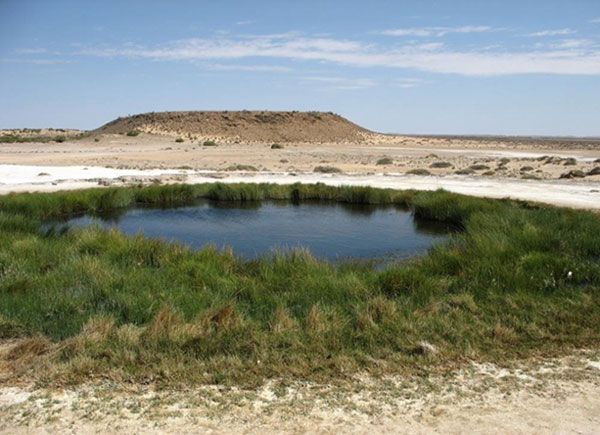
“
Groundwater is a critical component of the Earth's water cycle, providing a substantial portion of the freshwater used by humans and ecosystems. Understanding where this water comes from is essential for sustainable water management and conservation. In this blog, we will explore 20 important sources of groundwater, ranging from natural formations like lakes and rivers to human-made structures such as artificial recharge wells. Each source plays a unique role in maintaining groundwater levels and ensuring the availability of fresh water for various needs.1
1
”
Groundwater is the largest reservoir of freshwater, though it's mostly hidden beneath the Earth's surface. Despite comprising less than 1% of Earth's total water, it holds more than 30 times the volume of all surface water sources combined. 1
The Ogallala Aquifer, one of the world’s largest, spans eight U.S. states and holds enough water to cover the entire country with 8.3 inches of water. It plays a critical role in agriculture and water supply for millions of people. 2

The Great Artesian Basin in Australia is the largest artesian basin globally, covering 1.7 million square kilometers. This massive groundwater reservoir is crucial for water supply in Australia’s arid regions and supports many communities and industries.
The Nubian Sandstone Aquifer System lies beneath the Sahara Desert, making it one of the largest fossil aquifers in the world. This ancient groundwater source provides vital water resources to several countries. 3
Groundwater is replenished through a process known as recharge, where rainwater infiltrates the soil and percolates down to refill aquifers. This natural process can take years to centuries, depending on factors like rainfall rates and soil conditions. 4
Approximately 70% of the world’s groundwater is used for irrigation, making it a crucial resource for global agriculture. This extensive use highlights the importance of groundwater in sustaining food production and supporting agricultural practices. 5
As groundwater travels through layers of soil and rock, it undergoes natural filtration, removing many impurities and often resulting in cleaner water compared to surface sources. This filtration process is crucial for maintaining groundwater quality. 6

The deepest hand-dug well, located in the village of Kola, Burkina Faso, reaches a depth of 208 meters (682 feet). This impressive depth showcases human ingenuity in accessing groundwater and highlights the challenges faced in arid regions.
Some underground rivers, such as the San Antonio River in Texas, flow through caverns and subterranean channels, creating unique natural formations and ecosystems. 7
In volcanic regions like Iceland, underground magma heats groundwater, forming natural hot springs like the Blue Lagoon, showcasing the dynamic interaction between geothermal activity and Earth's subsurface processes. 8
Fossil aquifers, like the one in the Ganges-Brahmaputra Basin, contain ancient water isolated for millions of years. Studying these ancient groundwater sources provides valuable insights into Earth's climatic history and long-term water cycles. 9
Approximately 44% of the U.S. population relies on groundwater for their drinking water needs. This significant portion highlights the critical role groundwater plays in providing safe and essential drinking water across many communities in the country. 10
Our groundwater basin contains 13 trillion gallons of water, but only a small fraction is usable without risking physical damage and contamination from seawater from the adjacent Pacific Ocean. Effective management is crucial for sustainable use.11

Springs like Pamukkale in Turkey occur where groundwater naturally flows to the surface, often creating striking formations. These natural springs play a vital role in local ecosystems and provide a continuous source of fresh water.
The groundwater replenishment system, operational since 2008, provides 100 million gallons of purified water daily. By 2023, after expansion, it will supply 130 million gallons per day, serving the needs of 1 million people. 12
Groundwater is pumped annually from more than 200 wells managed by 19 cities, including Fullerton, and various water agencies within the Orange County Water District (OCWD). This extensive network supports local water supply needs. 13
Between 2010 and 2015, groundwater use in the United States rose by 8.3%, reflecting its growing importance. During the same period, surface water use decreased by 13.9%, indicating a shift in water resource management. 14
Around 25% of U.S. rainfall infiltrates the ground, replenishing essential groundwater supplies. This significant portion highlights the crucial role of rainfall in sustaining and maintaining our vital groundwater resources. 15
In 2017, Michigan utilized a staggering 2,888,325,875 gallons of groundwater, highlighting the state's significant reliance on this vital resource for various purposes, including agriculture, industry, and daily public water consumption. 16
Groundwater can host unique subterranean ecosystems. Aquifers often have their specialized microorganisms, including bacteria and fungi, that thrive in the dark, mineral-rich environment. 17


